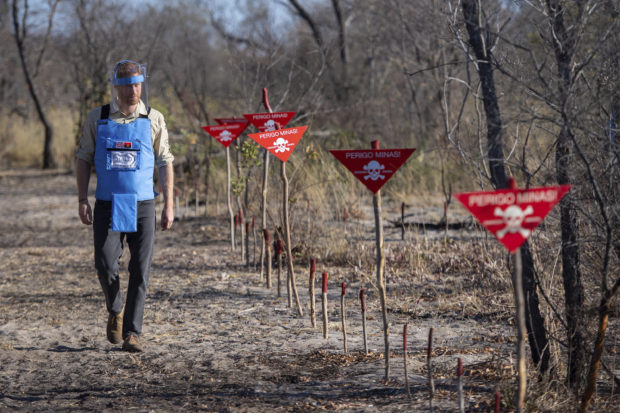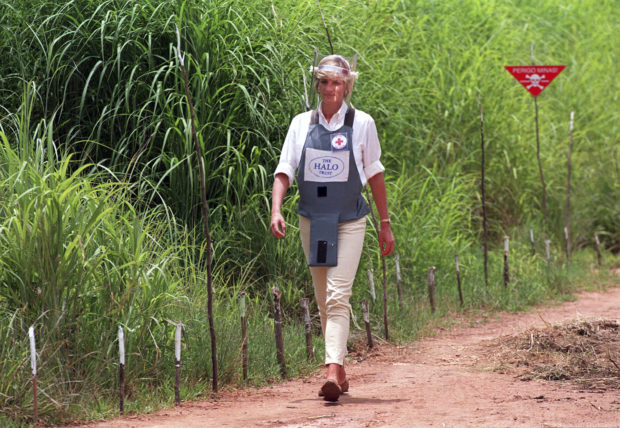Prince Harry walks through Angola minefield, echoing Diana

JOHANNESBURG — Prince Harry on Friday followed in the footsteps of his late mother, Princess Diana, whose walk through an active minefield in Angola years ago helped to lead to a global ban on the deadly weapons.
The prince, wearing body armor, walked through a minefield and was set to visit the spot where Diana was famously photographed on a similar walk during her own Africa visit in 1997. That field in Huambo is now a busy street. The southern African nation is now years past a grinding civil war and hopes to be land mine-free by 2025.
The Angola country director for mine-clearing organization The HALO Trust said Diana’s visit is still very much discussed today in Huambo after people were struck by her warmth and willingness to acknowledge their devastating 27-year conflict.

Britain’s Prince Harry walks through a minefield in Dirico, Angola, Friday, September 27, 2019, during a visit to see the work of landmine clearance charity the Halo Trust, on day five of the royal tour of Africa. Prince Harry is following in the footsteps of his late mother, Princess Diana, whose walk through an active minefield in Angola years ago helped to lead to a global ban on the deadly weapons. (Dominic Lipinski/Pool via AP)
“The main impact of Diana’s walk-in 1997 was the level of global exposure it provided for land mines not only in Angola but the world,” Ralph Legg said. She was a great advocate for a land mine ban, and “her willingness to visit an actual minefield, to place herself right in that context, provided great impetus and gave it a great boost.”
The international ban on anti-personnel mines was signed that year and entered into force two years later. So far, 164 countries have signed on.
Article continues after this advertisement“More than 48 million stockpiled mines have been destroyed and 31 countries have been completely cleared of land mines,” The HALO Trust said, while production of the weapons has almost dried up.
Article continues after this advertisement
In this January 15, 1997 file photo, Princess Diana, wearing a bombproof visor, visits a minefield in Huambo, in Angola. Prince Harry on Friday, September 27, 2019, is following in the footsteps of his late mother, Princess Diana, whose walk through an active minefield in Angola years ago helped to lead to a global ban on the deadly weapons. (John Stillwell/PA via AP, File)
Prince Harry on his visit also was expected to remotely detonate a mine, meet with mine-clearing teams, and visit the orthopedic hospital his mother visited for her meetings with mine victims.
“I think that will be a very poignant moment of coming full circle,” Legg said. “Very striking once people compare those images from the two visits to see how far Angola has come.”
The world, however, is hardly free of mines, and Legg said Angola itself still has about 650 minefields left to clear. Some countries that remain heavily mined include Afghanistan, Syria, and Yemen.
Angola now hopes to turn some of its mine-free areas into sites for wildlife conservation and ecotourism. The prince will unveil a project meant to protect wildlife corridors near the sprawling Okavango Delta, a rare inland delta in neighboring Botswana that doesn’t flow into a sea or ocean and is home to several endangered species.
Harry’s first official family tour with his wife, Meghan, the Duchess of Sussex, and their baby, Archie, will continue with stops in Malawi and further events in South Africa with a focus on issues including mental health and women’s empowerment. /kga